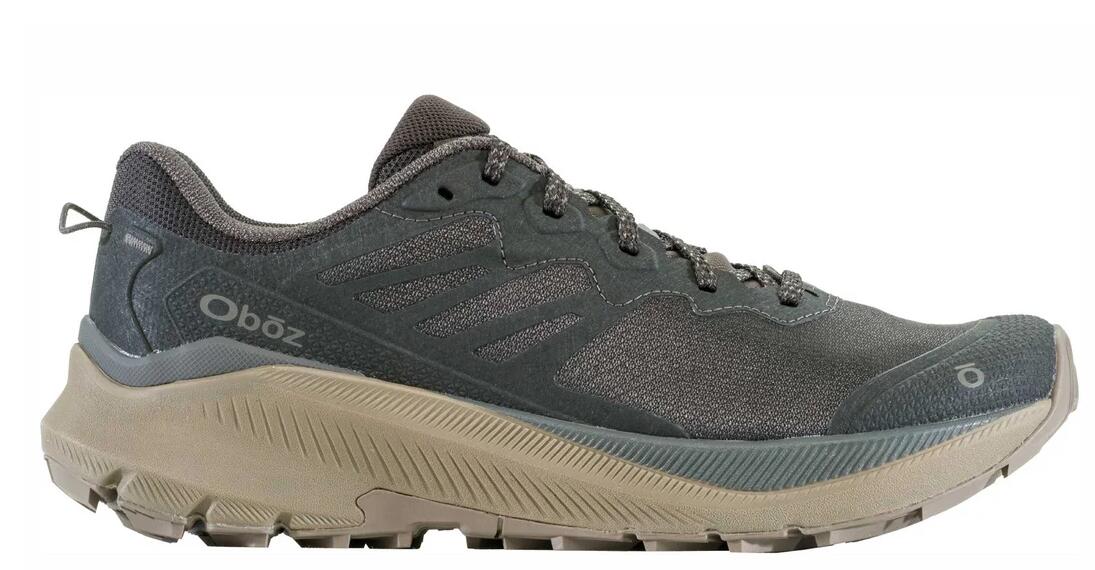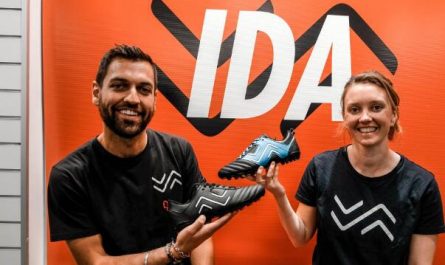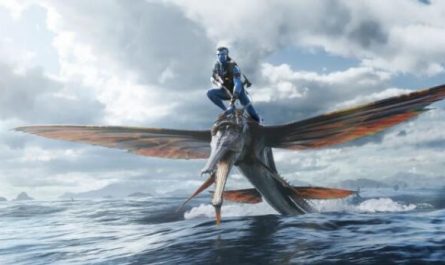Combining the comfort of a pair of sneakers, the rebound of a high-tech running shoe, and the grip of a technical hiker, the Katabatic Wind Low is made for going fast over rough terrain.
It’s also one of our favorites this year. After sending 17 testers out on the trails wearing 41 different pairs of hiking footwear for our Best Hiking Boots and Shoes guide, we named the Katabatic Wind Low the Best Shoe for Speed Hiking.
The comfort and lively ride of these hikers are linked to a construction that pulls from the fastest running shoes. First, Oboz uses a dual layer of nitrogen-infused foam, which is common in high-priced runners, but not hiking shoes. Why does that matter? Essentially, the infused gas creates bigger air bubbles, producing a lighter foam that feels softer and bouncier compared to traditional midsole materials.
Oboz Katabatic Wind Low Hiking Shoes
$185 AT REI $185 AT AMAZON
Pros and Cons
⊕ Cushy ride
⊕ Good value
⊗ Not water-resistant
⊗ Built for light-loads
Weight: 12.3 oz (Men’s 9) / 10.2 oz (Women’s 7)
Sizes: 8-14 (Men’s) / 6-11 (Women’s)
When you buy through our links, we may earn an affiliate commission. This supports our mission to get more people active and outside. Learn more.
Second, between the foam layers is another running innovation: a curved, forked carbon plate. The plate harnesses the foam’s rebound to enhance push-off, and protects the foot from rocks and roots, while the forked shape lets the tines act independently to stabilize the shoe in uneven terrain. The curved plate also preserves the rockered sole design, the upward-arcing curve under the toes that encourages the foot to roll down the trail, making long miles less taxing, according to Oboz.
Finally, the brand attaches the midsole to the upper with a “tear away” design: instead of gluing the midsole to the bottom of the upper, which creates a hard layer between your foot and the midsole, they attach the insole directly to the foam. “So cushioned I never got sore feet and found myself wearing them all the time,” said Alabama-based tester Seth Kromis, who tested the Katabatic Wind Low in Monte Sano State Park and other hiking areas around Alabama and Tennessee. Taken together, Kromis said it felt like the shoe sucked up the impact, rolled smoothly from heel to toe, and then launched his foot into the next stride.
TPU inserts around the heel wrap the lower foot, adding stability on uneven surfaces, like rock-hopping across a creek in California’s Palm Springs Canyon and bounding down uneven trails in Joshua Tree. “It’s the perfect balance of support and bounce that made me feel like breaking into a run,” said Bozeman-based tester Allison Bodznick, who used the shoes like trail runners and city walkers.
However, testers say you should watch your pack weight. An eight-millimeter heel-toe drop, one-inch-high stack height, and all that squishy, rockered foam meant we started to feel a little top-heavy with loads over 20 pounds.
But on day hikes, the Katabatic Wind Low’s gave us confidence, even in uneven and slippery situations, thanks to the proprietary Trail Tread rubber, which includes 20-percent recycled content. An aggressive chevron tread provided solid traction on a variety of surfaces, but particularly on wet rocks. “I could feel the treads sticking to the ground like frog feet,” said Bodznick.
The partially-recycled polyester mesh upper—highly breathable but not weatherproof at all—is buffered by tough TPU inserts along the forefoot. After a run down a scree field—with gaiters held firmly in place by a channel in the outsole—the Katabatic Wind Low’s emerged with minimal scuff marks.
With many footwear options to test this season, we found ourselves lacing these up most of the time in warm and dry weather. For hikers who want to go fast and far, the Katabatic Wind will last longer than trail runners without slowing you down. And at $185, they’re a great deal for any day hiker looking for a cushy ride.



